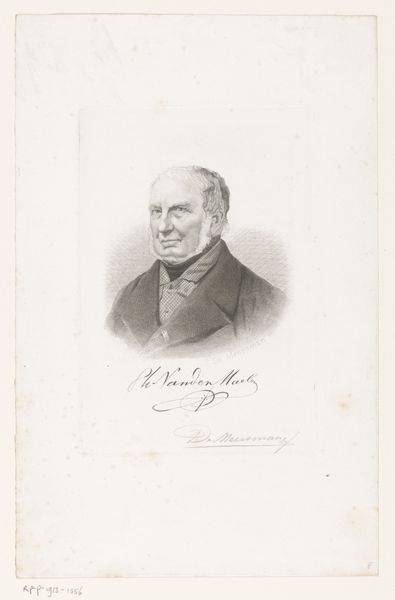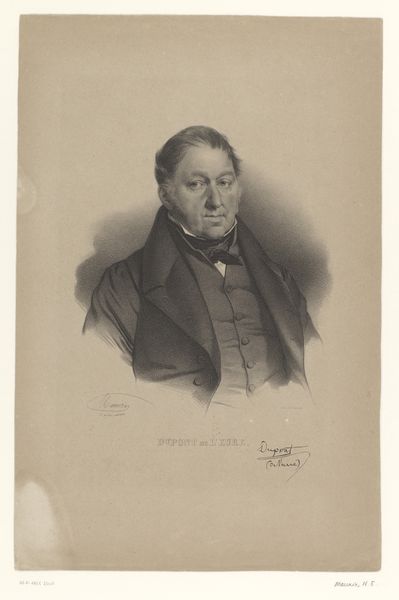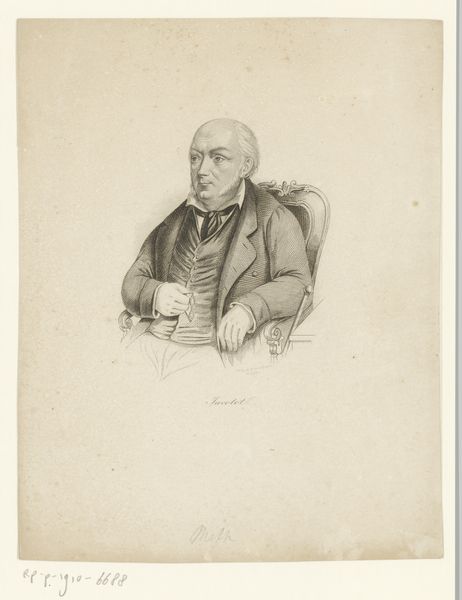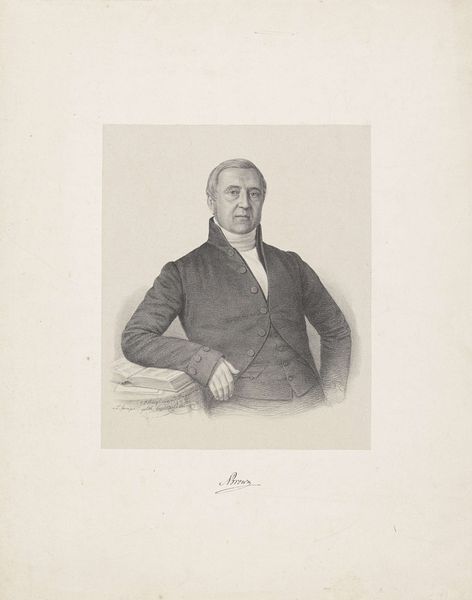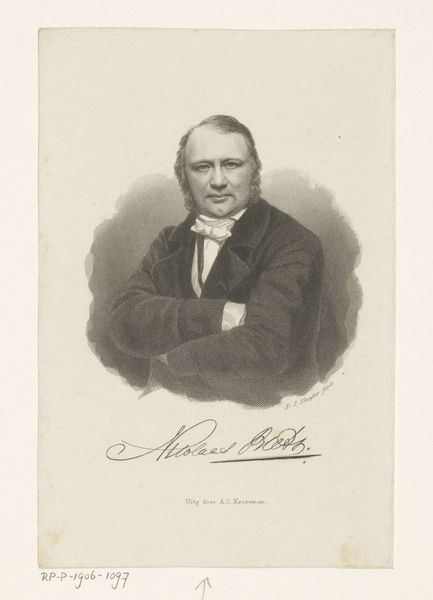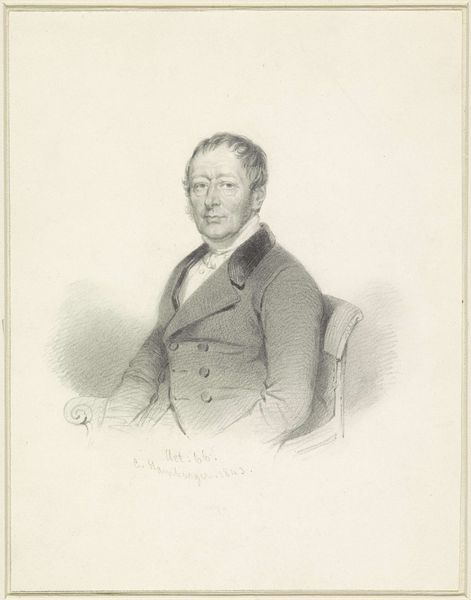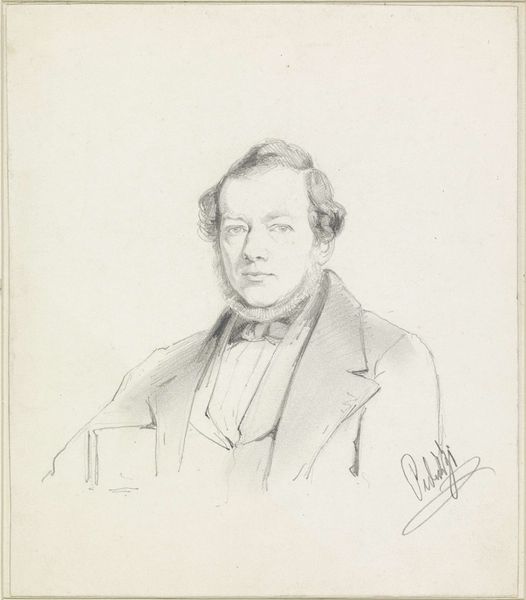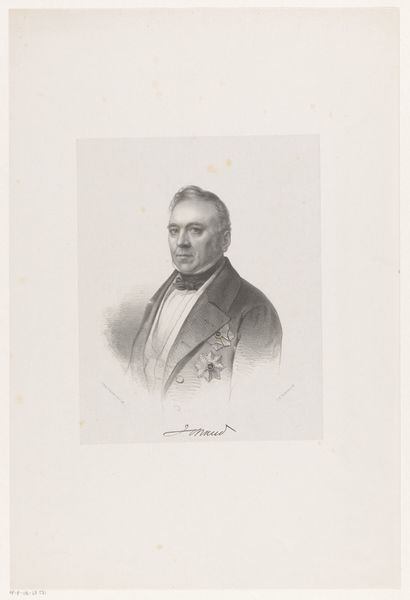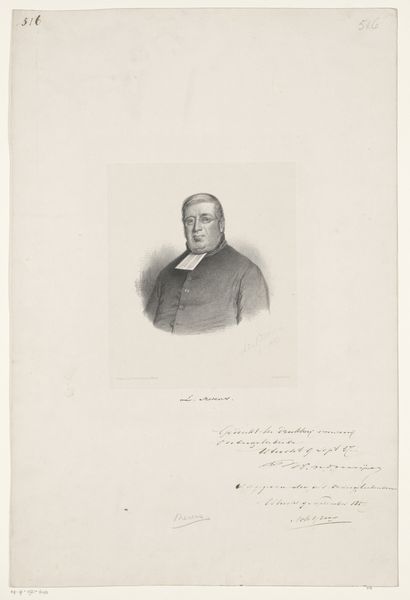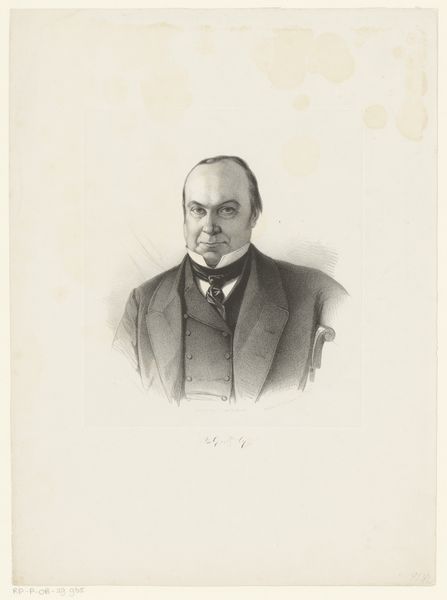
drawing, graphite
#
portrait
#
drawing
#
graphite
#
academic-art
#
realism
Dimensions: height 275 mm, width 215 mm
Copyright: Rijks Museum: Open Domain
Editor: We're looking at a graphite drawing, "Portret van R.C. Bakhuizen van den Brink, 1865," created by Johan Michaël Schmidt Crans. It strikes me as very formal, perhaps even a bit austere, with the subject presented in such detail, yet there's something about the lines that feels almost tentative. What do you see in this portrait through the lens of its composition? Curator: Consider the meticulous line work. Each stroke, seemingly deliberate, defines form and texture, yet adheres strictly to representation. Note the precise rendering of the jacket, achieved through complex cross-hatching to create volume. The artist emphasizes line quality as its primary tool; how do these formal decisions speak to a semiotic function beyond likeness? Editor: So, you are saying it's less about WHO is depicted, and more about HOW? Is the artist making a statement simply through technique? Curator: Precisely. The subject’s face, rendered with a near photographic attention to detail, draws the viewer's gaze, of course. But the overall effect relies heavily on the tension between the detailed facial features and the suggestive treatment of the drapery, created from more simple parallel and cross hatching. Can you infer what compositional decisions impact your reading of this piece? Editor: It makes me question what "realism" really meant at this time. If it was less about showing reality, and more about using accepted techniques to communicate ideas of status or importance... Curator: It certainly demands scrutiny of the era's visual language. Thinking critically about its intrinsic elements enables a deeper decoding of artistic choices and intentions, regardless of subject. Editor: I never considered that line work itself could be such a key part of the message. Curator: Now you are considering it on a level closer to its function and materiality within the broader practice of portraiture at that time.
Comments
No comments
Be the first to comment and join the conversation on the ultimate creative platform.

